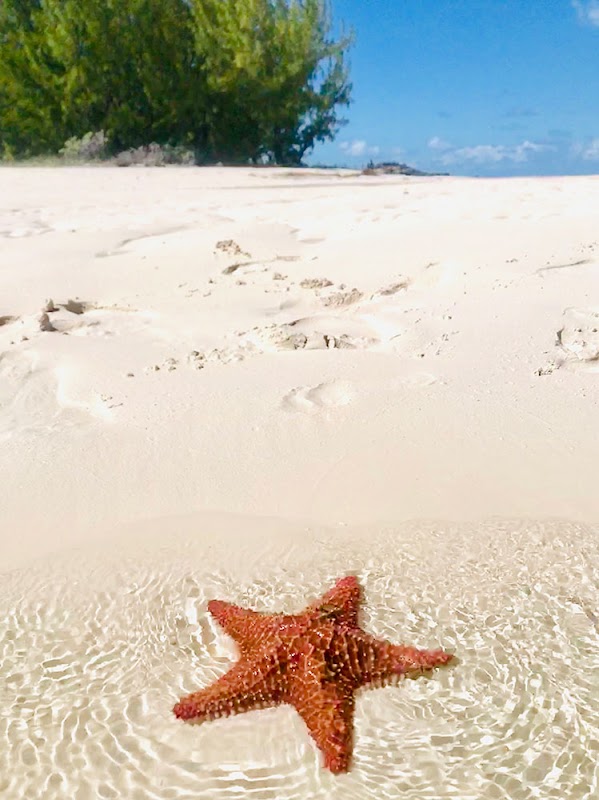
Chub Cay Marine Reserve Adventures
Chub Cay Marine Reserve offers an extraordinary tropical environment characterized by pristine waters and vibrant marine life, making it a prime destination for snorkeling and diving enthusiasts.
Popular Activities
Dive into the Depths: Unveiling the Secrets of Chub Cay Marine Reserve, Bahamas
Beneath the tranquil turquoise waves of the Bahamas lies Chub Cay Marine Reserve, an adventurer's paradise waiting to be explored. As you submerge into this vibrant underwater world, you're enveloped by the sun's filtered rays, painting the ocean floor with a mesmerizing dance of light and shadow. This haven for divers offers an exhilarating glimpse into the complexities of marine life and the thrill of discovery.
The marine reserve sprawls across a diverse seascape, offering divers of all skill levels the chance to experience its wonders. For those new to the diving scene, courses and guided tours are available, ensuring a safe and enriching plunge into these azure waters. Veteran divers, meanwhile, can indulge in the reserve's deeper secrets, exploring the labyrinthine coral formations with their nooks and hidden passages bustling with aquatic life.
Every dive is a sensory feast: the electric hues of corals are vivid under the clear waters, teeming with schools of snapper and angelfish that flit around like colorful confetti caught in a gentle underwater breeze. The water itself is a perfect concoction of refreshing clarity and buoyancy, embraced by a soft current that guides your exploration of this marine sanctuary.
Chub Cay's underwater landscapes are as varied as they are breathtaking. Majestic walls drop into the abyss, their edges cloaked in sponges and sea fans that sway rhythmically as if echoing the heartbeat of the ocean. Gullies and swim-throughs add an element of mystery, allowing divers to graze close to the vibrant ecosystems thriving on these coral encrusted alleyways. The deeper zones offer the thrill of potential encounters with larger ocean inhabitants, like curious reef sharks and the occasional languid glide of a passing manta ray—a gentle titan that reminds us of the grace and wonder of the natural world.
Preparation is key to making the most of your adventure beneath the waves. A buoyancy control device and well-maintained diving regulator is essential for controlling your descent and ascent, providing a sense of security as you navigate the depths. Dive computers are invaluable here, calculating your bottom time and assisting in safe decompression planning. Staying hydrated is crucial, as even the cool ocean can leave you parched, so be sure to bring along water to rehydrate between dives.
Post-dive, Chub Cay offers an inviting atmosphere to unwind and reflect on the day’s adventures. Whether lounging on the sunlit deck of your charter boat or strolling along the untouched beaches, the island provides a serene backdrop to ease back into land life. The local cuisine is another reward for your day’s endeavors, with fresh, ocean-to-table dishes that delight the palate and reinvigorate weary explorers.
In the Bahamas, Chub Cay Marine Reserve stands as a destination that captures the imagination and ignites the explorer's spirit. Here, every dive is a tale of beauty and excitement, where the borders between human and marine life blur into a shared story of curiosity and coexistence. Armed with this guide, adventurers are well-equipped to embrace the challenges and triumphs that come with diving into this vibrant aquatic realm. So, strap on your gear, take a breath, and plunge into the kaleidoscope of life that awaits beneath the waves of Chub Cay.
Plan Your Visit
Everything you need to know to prepare for an unforgettable trip to Chub Cay Marine Reserve.
Entrance Requirements
No fee required, permits necessary for certain activities like fishing.
Best Time to Visit
Best visited from November to April for optimal weather and marine conditions.
Visitor Information
None onsite; information available at Great Harbour Cay.
Getting There
Accessible by boat from Great Harbour Cay or by private flight to Chub Cay.
Weather & Climate
The marine reserve enjoys a tropical climate with warm temperatures year-round, featuring a drier season from November through April and a wetter season from May to October.
Conservation Efforts
Conservation efforts focus on coral reef protection and sustainable tourism, with particular attention to mitigating impacts from potential overfishing and climate change effects.
Camping in Chub Cay Marine Reserve
Find the perfect spot to stay overnight and immerse yourself in the details.
Top Trails
Trailblazer Tips
Book your snorkeling or diving trips in advance, especially during peak tourist season.
The best time to visit is between November and April when the weather is cooler and more stable.
Ensure you have the necessary permits for any fishing activities.
Bring an underwater camera to capture the vibrant coral and fish species.
